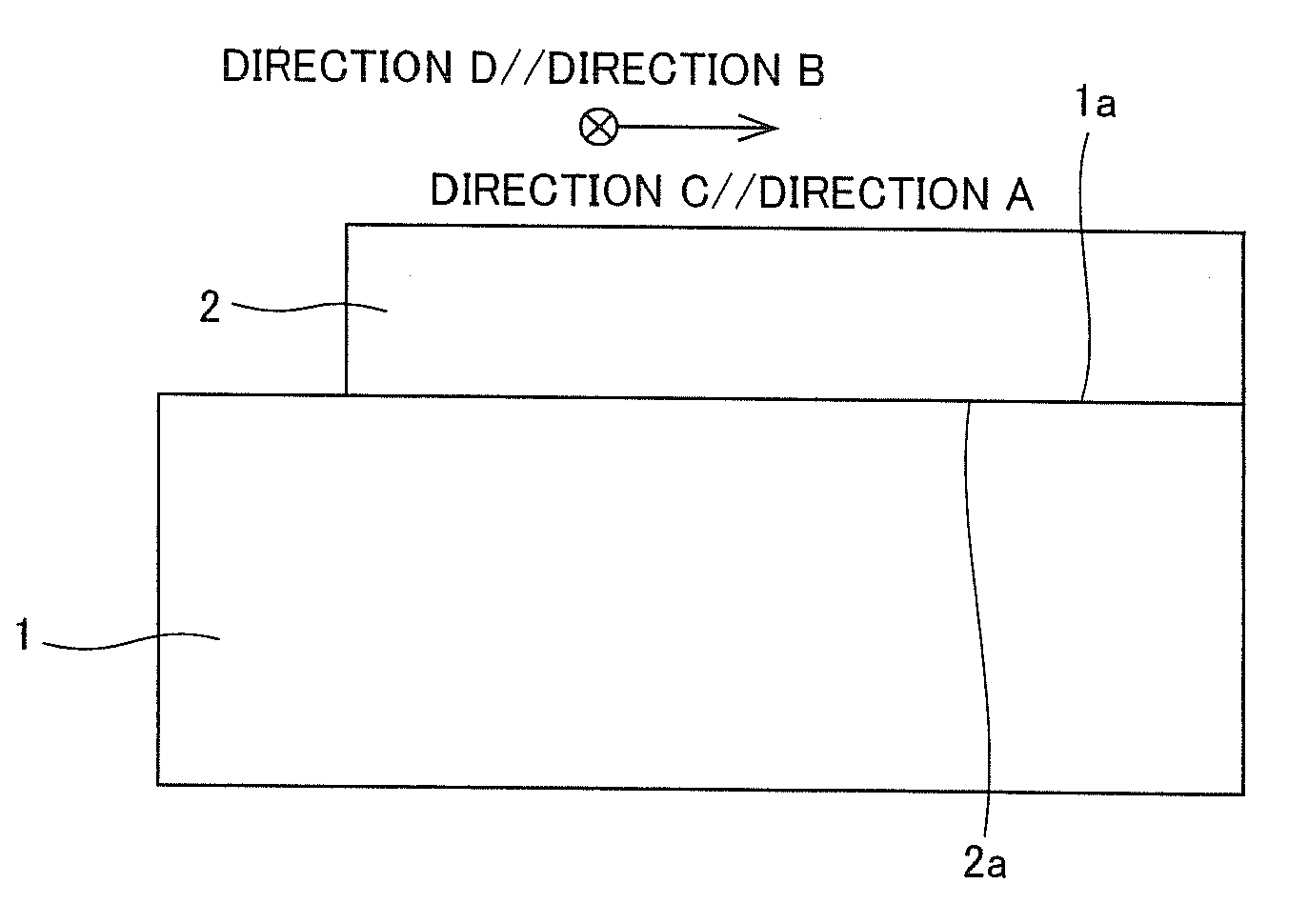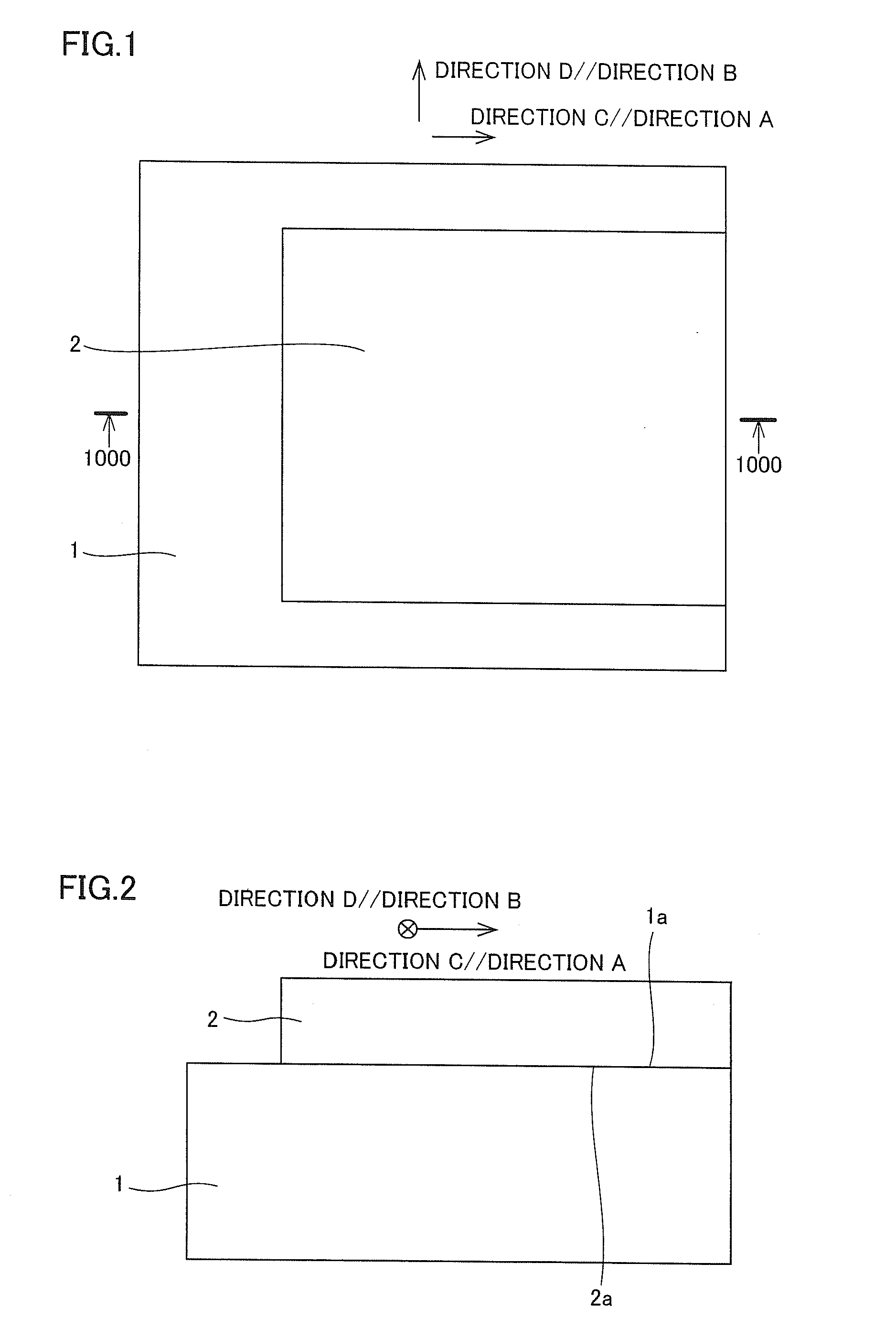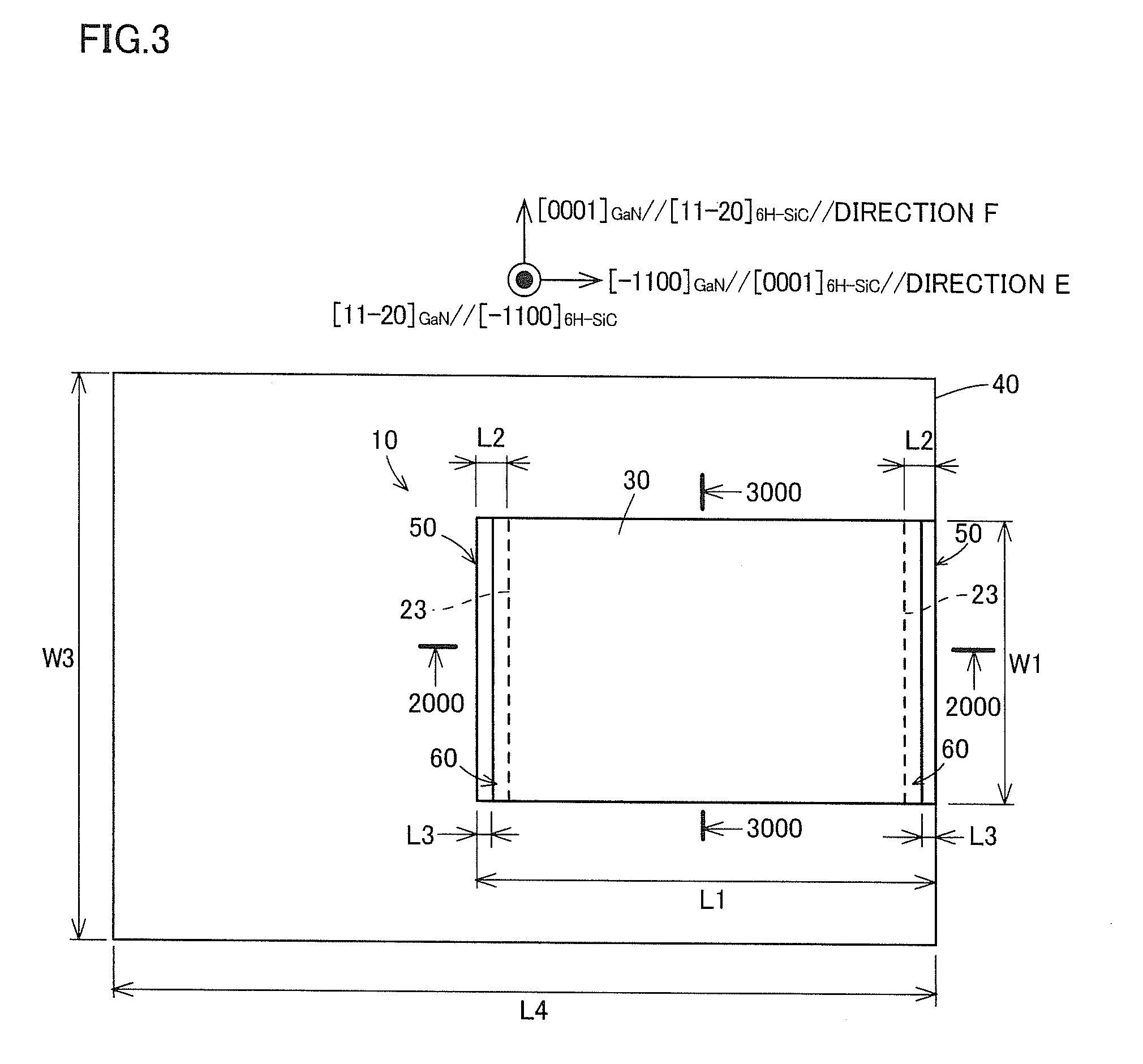Semiconductor element and method for manufacturing the same
a semiconductor and light-emitting element technology, applied in the field of semiconductor elements, can solve the problems of disadvantageous degradation of the element characteristics of the semiconductor light-emitting element, and difficulty in reducing the difference between the thermal expansion coefficient of the base and the gan-based semiconductor multilayer structure as to the respective in-plane directions of the bonded surface,
- Summary
- Abstract
- Description
- Claims
- Application Information
AI Technical Summary
Benefits of technology
Problems solved by technology
Method used
Image
Examples
first embodiment
[0067]The structure of a semiconductor laser element according to a first embodiment is described with reference to FIGS. 3 to 6. The first embodiment is described with reference to a case applying the present invention to a semiconductor laser element which is an exemplary semiconductor element. The oscillation wavelength of the semiconductor laser element according to the first embodiment is about 410 nm, and a laser beam is polarized in a TM mode. Referring to FIGS. 3 to 5, crystal orientations described before a subscript GaN are the crystal orientations of a semiconductor element section 10, and crystal orientations described before a subscript 6H—SiC are the crystal orientations of a support substrate 30. FIGS. 3 and 4 show the crystal orientations of the semiconductor element section 10 omitting the misoriention angle of the semiconductor element section 10.
[0068]The semiconductor laser element according to the first embodiment comprises the semiconductor element section 10, ...
second embodiment
[0099]In this second embodiment, a GaN-based semiconductor laser element having a structure employing no support substrate dissimilarly to the aforementioned first embodiment is described with reference to FIGS. 16 and 17. The second embodiment is described with reference to the case of applying the present invention to the GaN-based semiconductor laser element which is an exemplary semiconductor element. The oscillation wavelength of the GaN-based semiconductor laser element according to the second embodiment is about 410 nm.
[0100]The GaN-based semiconductor laser element according to the second embodiment comprises a semiconductor element section 110 and a submount 140, as shown in FIGS. 16 and 17. The submount 140 is an example of the “base” in the present invention.
[0101]The semiconductor element section 110 includes an n-type GaN substrate 130 having a thickness of about 100 μm and consisting of n-type GaN doped with Si. The n-type GaN substrate 130 has a principal surface 130a...
third embodiment
[0113]The structure of an LED element according to a third embodiment is described with reference to FIGS. 18 and 19. The third embodiment is described with reference to the case of applying the present invention to the LED element which is an exemplary semiconductor element. The peak wavelength of the light-emitting diode element according to the third embodiment is about 480 nm.
[0114]The LED device according to the third embodiment comprises a support substrate 200 and an LED element section 210, as shown in FIGS. 18 and 19. The support substrate 200 is an example of the “base” in the present invention, and the LED element section 210 is an example of the “semiconductor element section” in the present invention.
[0115]The support substrate 200 has a thickness of about 300 μm, and is in the form of a square having a length of about 400 μm on each side in plan view. The support substrate 200 consists of a composite material of carbon and metal constituted of a graphite particle sinte...
PUM
 Login to View More
Login to View More Abstract
Description
Claims
Application Information
 Login to View More
Login to View More - R&D
- Intellectual Property
- Life Sciences
- Materials
- Tech Scout
- Unparalleled Data Quality
- Higher Quality Content
- 60% Fewer Hallucinations
Browse by: Latest US Patents, China's latest patents, Technical Efficacy Thesaurus, Application Domain, Technology Topic, Popular Technical Reports.
© 2025 PatSnap. All rights reserved.Legal|Privacy policy|Modern Slavery Act Transparency Statement|Sitemap|About US| Contact US: help@patsnap.com



